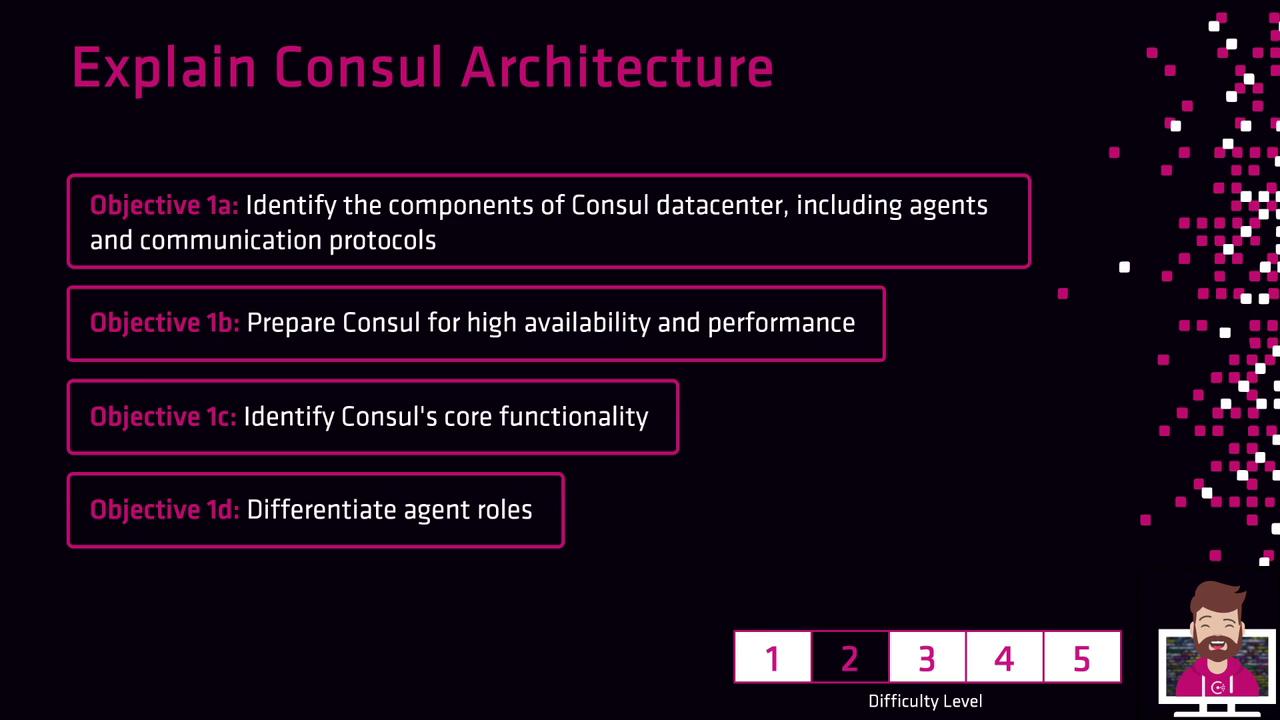HashiCorp Certified: Consul Associate Certification
Explain Consul Architecture
Objective 1 Section Overview
In this module, we’ll introduce HashiCorp Consul’s data center architecture and its essential components. You’ll learn how Consul enables service discovery, health checking, and key/value storage—and how it achieves high availability through its clustering model.

What You’ll Learn
| Objective | Description |
|---|---|
| Consul Components | Understand client and server agents, datacenters, and communication protocols |
| High Availability & Performance | Prepare Consul clusters for fault tolerance and efficient data replication |
| Core Functionality | Explore service discovery, health checks, key/value store, and service mesh design |
| Agent Roles | Compare server vs. client behavior and learn best practices for each |
Prerequisites
Familiarity with service discovery concepts and basic networking will help you get the most out of this lesson.
Before diving into each topic, we’ll start with a high-level overview of Consul’s problem space and how its architecture addresses distributed system challenges. Subsequent sections will provide in-depth explanations, configuration examples, and best practices.
References
Watch Video
Watch video content